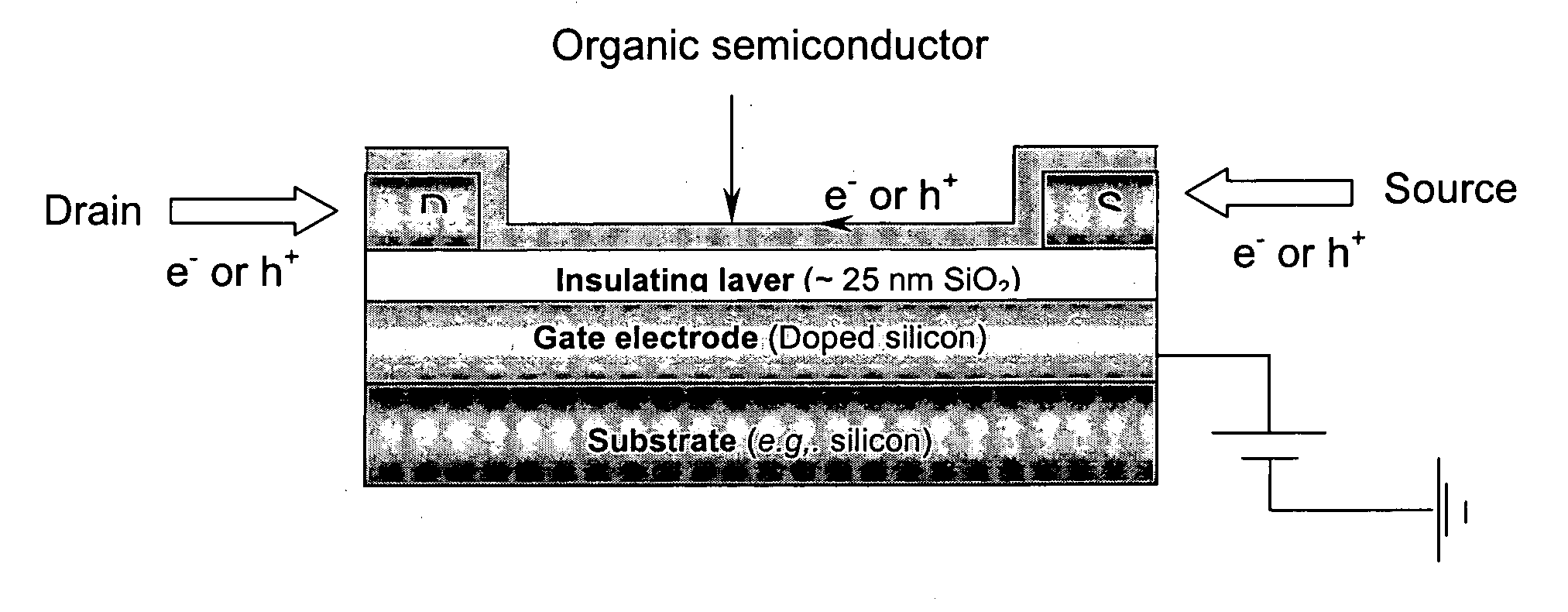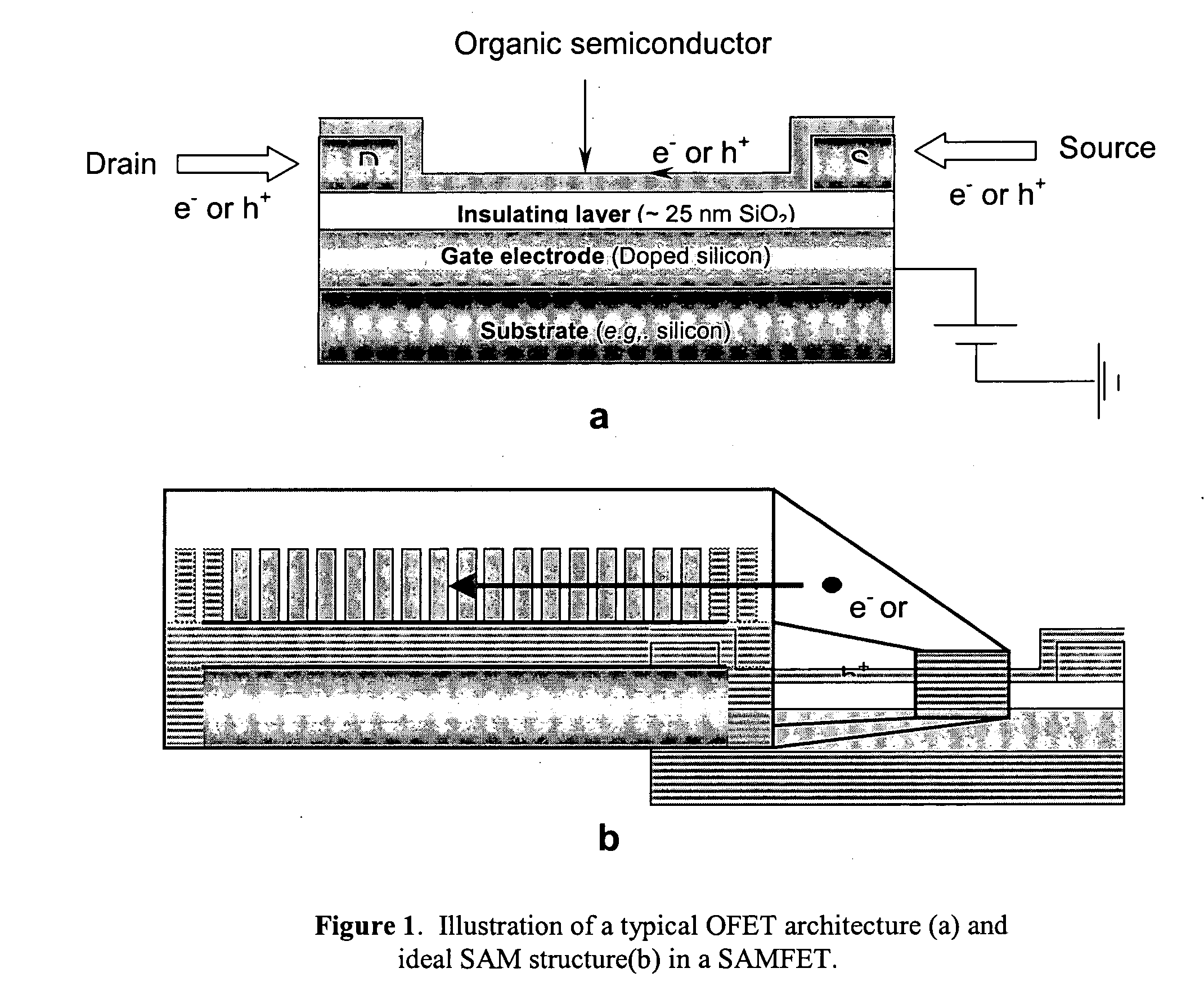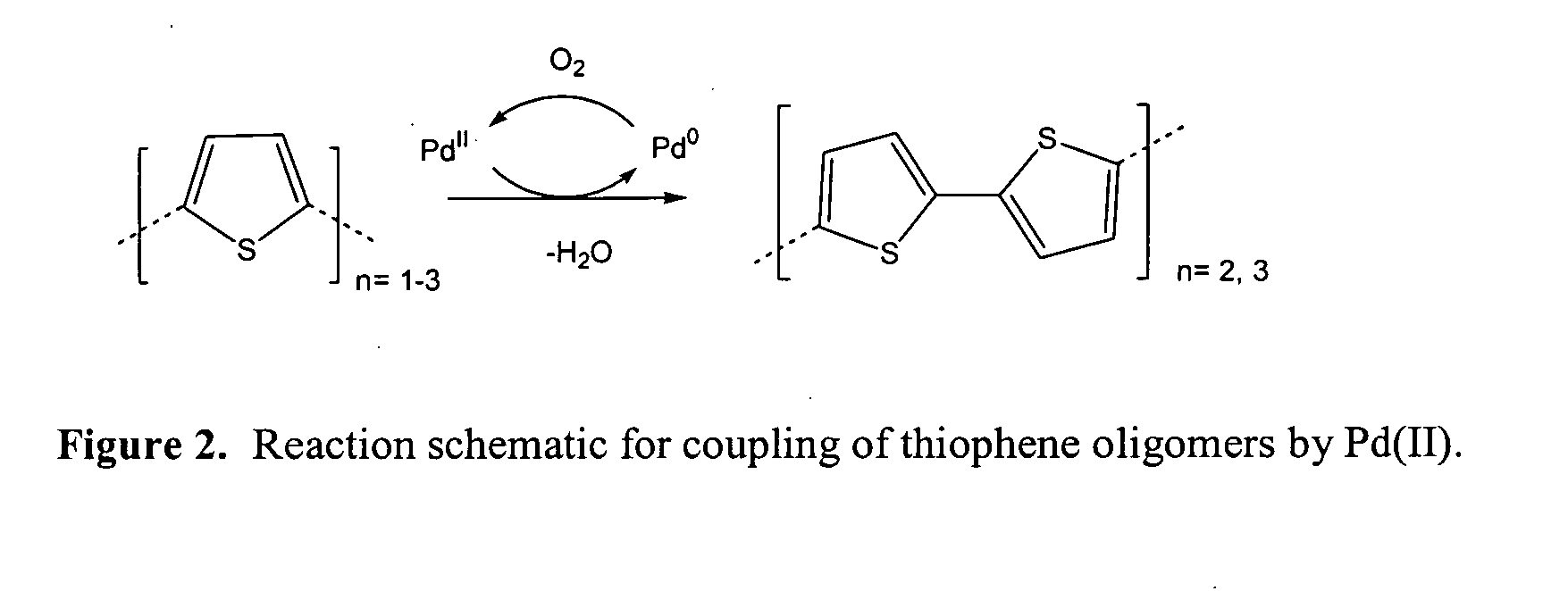Formation of ordered thin films of organics on metal oxide surfaces
a metal oxide surface and organic semiconductor technology, applied in thermoelectric devices, solid-state devices, nano-informatics, etc., can solve the problems of low efficiency of organic semiconductor layers, large and inability to achieve very high current densities in simple holes. achieve the effect of reducing transistor curren
- Summary
- Abstract
- Description
- Claims
- Application Information
AI Technical Summary
Benefits of technology
Problems solved by technology
Method used
Image
Examples
Embodiment Construction
[0015] As is widely known, significant barriers to charge injection may exist at interfaces between dissimilar materials such as between inorganics and organics. Such junctions are found at the anode (for example, indium tin oxide, ITO) and cathode of organic light emitting diodes (OLEDs) or at electrodes in other novel (opto-)electronic devices comprising conjugated organic materials.1 It is therefore of interest to develop methods to suitably modify interactions at the interfaces of such dissimilar materials so that desired electronic properties of devices incorporating them can be realized. One way to accomplish this is by introducing a film, such as a self-assembled monolayer (SAM), onto the electrode surface. It is possible that charge transport across interfaces can be adjusted by the introduction of such monolayers; 2-12 these monolayers could then be further modified to enhance device function. Thus, considerable research has been reported on methods for forming films of ele...
PUM
| Property | Measurement | Unit |
|---|---|---|
| Fraction | aaaaa | aaaaa |
| Energy | aaaaa | aaaaa |
| Electrical conductivity | aaaaa | aaaaa |
Abstract
Description
Claims
Application Information
 Login to View More
Login to View More - R&D
- Intellectual Property
- Life Sciences
- Materials
- Tech Scout
- Unparalleled Data Quality
- Higher Quality Content
- 60% Fewer Hallucinations
Browse by: Latest US Patents, China's latest patents, Technical Efficacy Thesaurus, Application Domain, Technology Topic, Popular Technical Reports.
© 2025 PatSnap. All rights reserved.Legal|Privacy policy|Modern Slavery Act Transparency Statement|Sitemap|About US| Contact US: help@patsnap.com



